|
|
|
well-known artifacts
Thursday, July 27 2006
setting: 5 miles south of Staunton, Augusta County, Virginia
I went down to the swamp this morning to look at the changes wrought by the beavers, who have had a working dam now for at least two years.
I saw that the beavers had managed to cut down nearly all the ash trees on the floodplain. A few remain, but they've been nearly girdled and will fall in a strong wind. The beavers don't seem to like the Black Walnuts that grow among the ashes, though most of these are now dead too, victims of the perpetually high water table. The beaver dam itself is about as high as it can possibly get; most of Folly Mill's Creek's flow now goes off across the floodplain and flows down a ditch along its northwest edge. Traditionally water in this ditch has been highly seasonal, but now it's every-present and grass no longer grows at its bottom. It's come to resemble a perennial stream, complete with slippery black rocks and snails.
Having logged-off the easy ash trees, the beavers have had to go in search of new timberlands. They've constructed a series of canals (two feet wide by six inches deep) across the swamp to the forested slopes of Muellers' Mountain, where they've mostly been cutting down small Virginia Pine trees. The beavers don't seem to have any interest in oak, which constitutes a large majority of the trees on the south-facing slope above the lowlands.
Back at the house, I noticed various improvements made by some carpenters my parents' had hired. The rotted planks of the old picnic table had all been replaced with treated lumber and the old sawbuck had been crudely copied in treated lumber held together with drywall screws. The old sawbuck was still there, rotted and worn but clearly superior in construction. Its parts had been carefully notched to better fit one another and its main seams were were held together with bolts. My father had built it in the mid-1970s and it had been the place where all of our firewood had been hand-sawn from ten foot logs into woodstove-compatible pieces.
My father built a lot of tools back in the early days of our life in rural Virginia, and relics of them abound in and around the house. Some are still perfectly usable and others, like the crumbling sawbuck, are gradually being absorbed by the soil. Near the picnic table I found the head of an old hay rake my father had made. It was a hardwood board about two inches wide and two and a half feet long and had a series of pegs sticking out of it, each a dowl whittled from a stick of native wood. One of the end pegs had broken off more than 20 years ago, and more recently the handle had also snapped off. I'd used that rake to consolidate hay every summer season throughout the late 1970s and into the late 1980s. Now, though, it was another memory slowly being lost to decay. I decided I could make good use of it, perhaps by repurposing it as rack to put coats or as a place to hang my tools. I even went and got some tools so I could whittle out a replacement for that one end peg that had been missing for nearly all of its active life. Oddly, though, when I expressed my interest in making good use for this slowly-rotting artifact, my father was reluctant to part with it. Seemingly, for him, giving it up was an admission that his days of homesteading were now over and he was slipping into his useless years. I should have just taken it without asking.
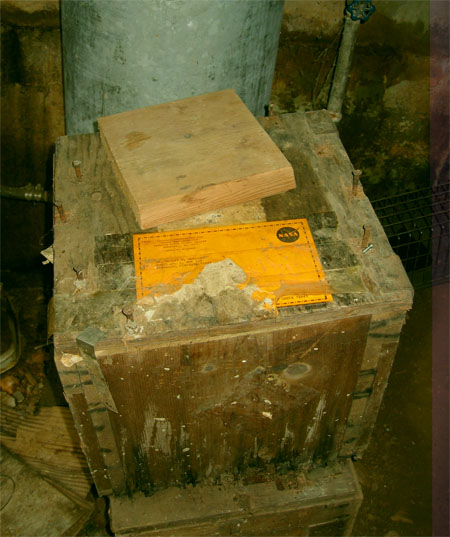

The many snake skins in the basement of my childhood home aren't the only things that terrify visiting plumbers. This rotting old box contains geological samples, but the presence of an official NASA shipping label (my father used to work at Goddard Space Flight Center in suburban Maryland) is enough to cause some to wonder if perhaps it contains some of those space aliens the government has been covering up all these years.

My brother Don today. He started shaving recently in preparation for an upcoming dance he's been invited to at Mary Baldwin College. If you click to enlarge, the plant-savvy among you will note that there is a hearty clump of Poison Ivy on the trunk of the large Chinquapin Oak behind Don's right shoulder.
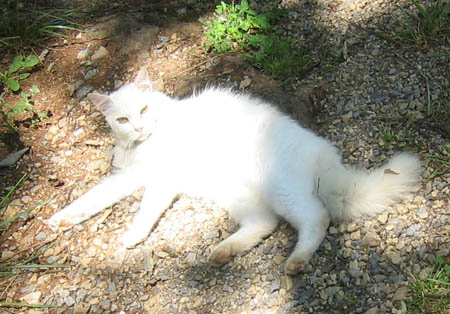
Hobo, the new fluffy white cat who adopted my childhood home as his own.

Hoagie with Chaps, her new dog.

"The Kitten" relaxing in front of the wood stove in the kitchen.
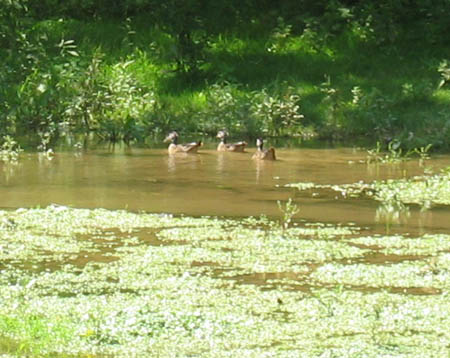
A few Wood Ducks take advantage of the wetlands created by the beaver dam.
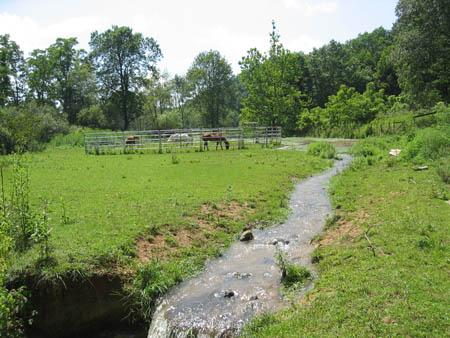
Most of Folly Mills Creek now runs down this ditch, which carries overflow from the beaver dam, which is at the base of the trees in the upper left of this photo.

Felled ash trees near the beaver dam. Click to enlarge.
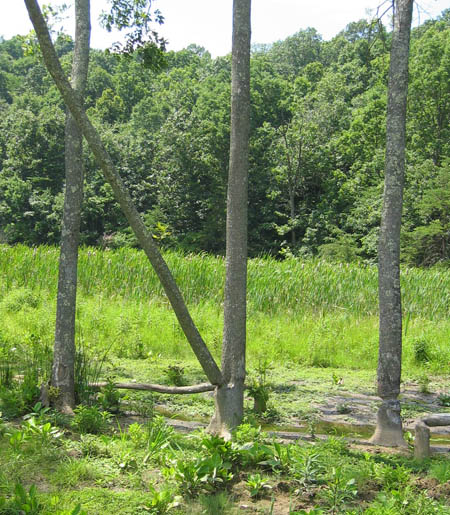
Ash trees soon to fall, with the swamp in the background. The swamp is thousands of years old, while the beaver dam is only two.
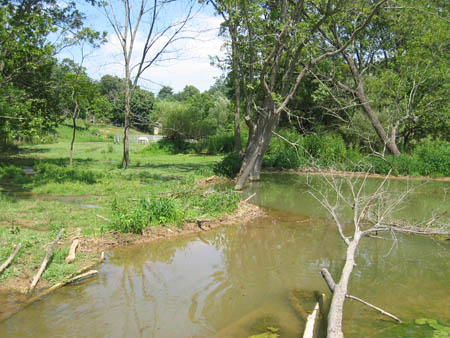
Looking back at the beaver dam (to the right) and my childhood house (center background) from south (upstream) of the dam.
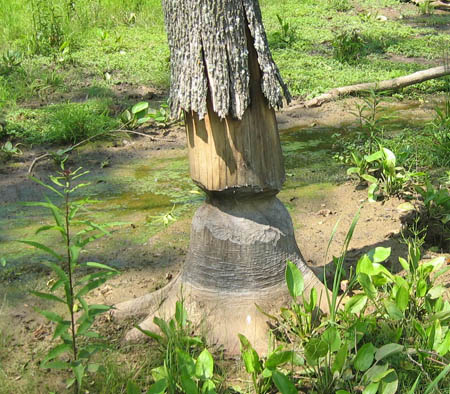
There's not much left holding up this ash.
For linking purposes this article's URL is:
http://asecular.com/blog.php?060727 feedback
previous | next |











